 Home
HomeAll Hacks
Zetec Engine
SPI Engine
General
Suspension
Interior
Exterior
In-Car-Entertainment
Detailing and Cleaning
Maintenance
Miscellaneous
Testing your thermostat
How to test the temperature at which your thermostat will open and close. This can determine if your thermostat is bad or not.
Time Required:
10 minutes once the thermostat has been removed
Tools Needed:
Procedure:
First, you must get the thermostat out of the car. That's covered in this articleIt's pretty plain to see when your thermostat is "stuck open". When it's stuck open, the water flows through it all the time, and doesn't stay in the engine long enough to heat up. One symptom of a stuck-open thermostat is the heater delivering cool air, but this can be caused by other things. Visibly, you'll see a gap between the thermostat frame and the "pellet" even when the thermostat is cold (see the pictures of the hot thermostat below). If so, this is a faulty thermostat.
A "stuck closed" thermostat is considerably less obvious. The thermostat will be closed at room temperature but won't open at the right operating temperature either. This can cause the fluid in the radiator to remain pretty cool while the water inside the engine can't escape. This can lead to overheated engines, warped heads, cracked blocks, blown head gaskets and other serious problems. Usually, the temperature guage will quickly rise to indicate a problem before it gets too serious.
In any case, replace the thermostat with a new one if it's faulty.
Testing the thermostat
1) Boil some water in the microwave. Make sure it's deep enough to cover the whole thermostat and then some. Remove from the microwave with a hot pad. Be very careful, water can boil over when you pull it out of the microwave even if it seems calm before you remove it. We don't want people hurting themselves! NEVER, EVER heat the water with any metal instruments, tools, or parts in it.
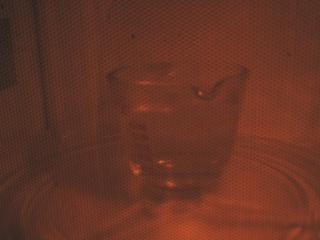
2) Test the temperature of the water. It should be over 200 degrees, but it took me a while to set my camera up.
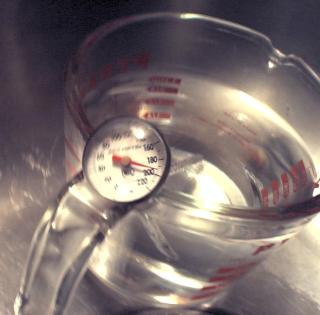
3) With salad tongs, gently place the thermostat into the water, being careful not to splash the hot water. The thermostat should start to open after a few seconds
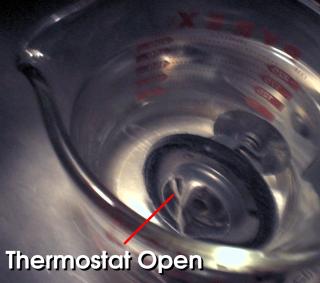
4) Insert the thermometer again and watch the temperature and the thermostat gap at the same time. As the temperature falls closer to the "operating temp" of the thermostat, the gap will get smaller.
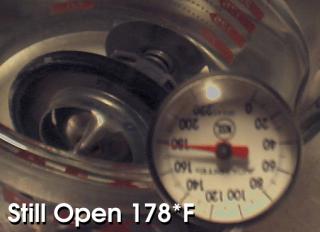
5) Take note of the temperature at which the gap closes (to the naked eye) completely. If this process is taking too long, you can trickle warm water into the container VERY slowly, waiting a few seconds between adding dashes of warm water. This will cool the thermostat's bath down a little quicker. This can make the test inaccurate though.
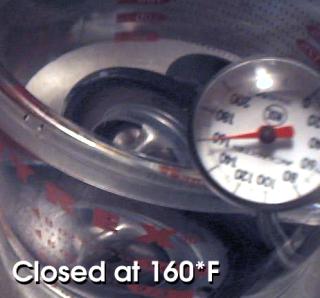
Carefully remove the thermostat with the tongs, and set it aside to cool down. 140 degrees is enough to cause serious burns, and we've been playing with much higher temperatures than that. Carefully dispose of the hot water down a drain, or mix with cold water to reduce it to a safe temperature. As always, keep animals and children away from all cooling system parts and residues including the water we immersed the thermostat in, as coolant is poisonous. Thoroughly wash all utinsils and glassware used promptly after testing your thermostat to reduce the risk of contamination.
Note: If the thermostat fails to open even though the water is above 190 degrees, you probably have a "stuck closed" situation. Test it again, and make sure the water is actually at a rolling boil.
comments powered by Disqus